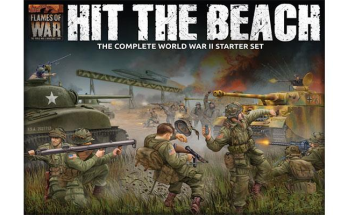Imagination is not a new product, but is one easy to overlook among the countless pile of RPGs and supplements we gamers collect. Let’s take a look at this classic aid to role-playing and see if there is still room for it in the modern role-playing hobby.
Imagination is unusually packaged. It comes in a hard skull-shaped container wrapped in a worryingly skin-like substance. Every copy of Imagination is different, and your own copy is likely to come in a container very different to my own. Despite the outward appearance, every Imagination possesses just the same potential and capabilities.
It’s worth mentioning from the start that Imagination is not an easy product to master. Learning how to use Imagination may take a lifetime, but the rewards are easily worth it. Some people forget they have Imagination at all! They distill their characters down to optimal numeric choices and bemoan the lack of fluff in the rules, as if Imagination should be pre-written, and prepared for them in advance. That hints to a lack of skill in using their own Imagination.
So what is Imagination, and what does it do?
Simply put, Imagination takes information, and gives it life.
That’s a bold claim, but Imagination tends to work better the less information the player or GM is presented with in the first place. It’s no accident that the most highly praised D&D adventure modules (Keep on the Borderlands, Isle of Dread, The Temple of Elemental Evil, Tomb of Horrors to name a few) all contained comparatively little in the way of written fluff and positively demanded the use of Imagination to get the most out of them. Some were downright turgid in their prose, but from that turgid prose diamonds are made.
Compare those classic modules with modern adventures which use battlemats to show locations to the highest resolution, and those which require Imagination win out every time. Imagination always has a higher pixel count.
Imagination enhances your game experiences by filling in the details from bare-bones information. It takes a simple description such as
“You see a thirty foot square stone room with pillars in the corner, a rough flagstone floor and a door to the North. There is a 10′ square hole in the centre with spikes embedded in the ceiling above it and a lever on the West wall.”
and adds in the unsaid. Your Imagination may make the pillars ornately carved Grecian pillars, or cracked and worn with age. It will add the squeak of distant rats and a small pile of rubble in the corner. It adds blood on the spikes. Imagination sets to work picturing exactly what that lever does, and puts a wicked smile on your face.
If you are the GM, a single line of room description can be turned into the setting for hours of entertainment, and the players in turn will take your descriptions and embellish them with Imagination of their own. Wow!
Imagination can also be used during combat. Whilst using miniatures and Imagination aren’t mutually exclusive, we found that gaming on a 5′ grid tended to stifle Imagination rather than enhancing it. Imagination lets you see the world through the eyes of your hero rather than as some disembodied head floating high above the scene. You’re not moving your Fighter three squares forwards – you are him, leaping bravely towards the approaching Demon Horde!
Imagination is compatible with all Editions of D&D. If you use Fourth Edition D&D, Imagination can take a Martial Exploit such as Cleave and turn it into a turning point in a battle. It can convert the most abstract of Powers into something truly remarkable, and put the role-playing back into the game, right where it belongs. At the front.
Imagination doesn’t just help you visualise a scene; it helps you get inside it. The trick is to learn how to use your Imagination to turn the raw data into something alive.
For example, if your character’s stats are STR 14, DEX 16, CON 13, INT 12, WIS 10, CHA 15 your hero may (through Imagination interpreting the game stats) be likeable, bold, somewhat foolhardy but confident is his own abilities. My Imagination pictures him with a cocky half-smile, a mop of curly brown hair, leather tunic and battered shortsword. Your own Imagination, of course, may differ.
Whatever role-playing game (and whichever edition) you play, Imagination should be at the top of the list of “Things you need to play” . Role-playing games require Imagination, pencils, paper and dice.
Sometimes you don’t need pencils. Sometimes you don’t need paper. Heck, sometimes you don’t even need dice.
But you always need Imagination.
5 stars.
Use yours today!




When I unwrapped Imagination, it made kind of a big mess. Is this normal? Also, now I’m drooling everywhere and gjolcvaesfj
Yeah. Unboxing your Imagination can be tricky. In particular, it’s easy to damage the spine, and that’s never a good thing to do with a role-playing product.
I’m sure there’s unboxing videos on YouTube which show you how to do it right……
Too true, one of the things that most puts me off about RPGs is the amount of reading it seems to require. Don’t get me wrong I love reading, just not lists of hardware and not quarter page descriptions of every broom closet in the haunted manor! However, I imagine that you must have imagined rolling these stats: STR 14, DEX 16, CON 13, INT 12, WIS 10, CHA 15
:)
man, i’m totally pirating that. torrent or magnet link?
That’s the best thing about Imagination. It’s DRM free!
A brilliant review of one of the best RPG products money can’t buy. I got mine years ago and it’s tattered and dog-eared but still works perfectly. I also have the expansion sourcebook INSPIRATION, but you only really need the core IMAGINATION to run a game.
I don’t know about you, Robin, but my imagination is still running rampant. I can’t stop it. :)